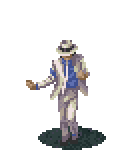Navigation
Install the app
How to install the app on iOS
Follow along with the video below to see how to install our site as a web app on your home screen.
Note: This feature may not be available in some browsers.
More options
-

Update Regarding Multitracks + Registration
It's clear that this thread needs some love and attention. A lot of the links have either expired or been miss-labelled. With the amount of tracks there are, this is quite a practice. I have made the decision to lock this thread from further replies and to put out this notice that I will be refreshing this thread with updated links and guidance where needed.
I will update the thread on multitracks and the first post with any forth coming updates about this in due course. For information - I have also disabled user registrations to do some tidyup. Stay tuned.
You are using an out of date browser. It may not display this or other websites correctly.
You should upgrade or use an alternative browser.
You should upgrade or use an alternative browser.
